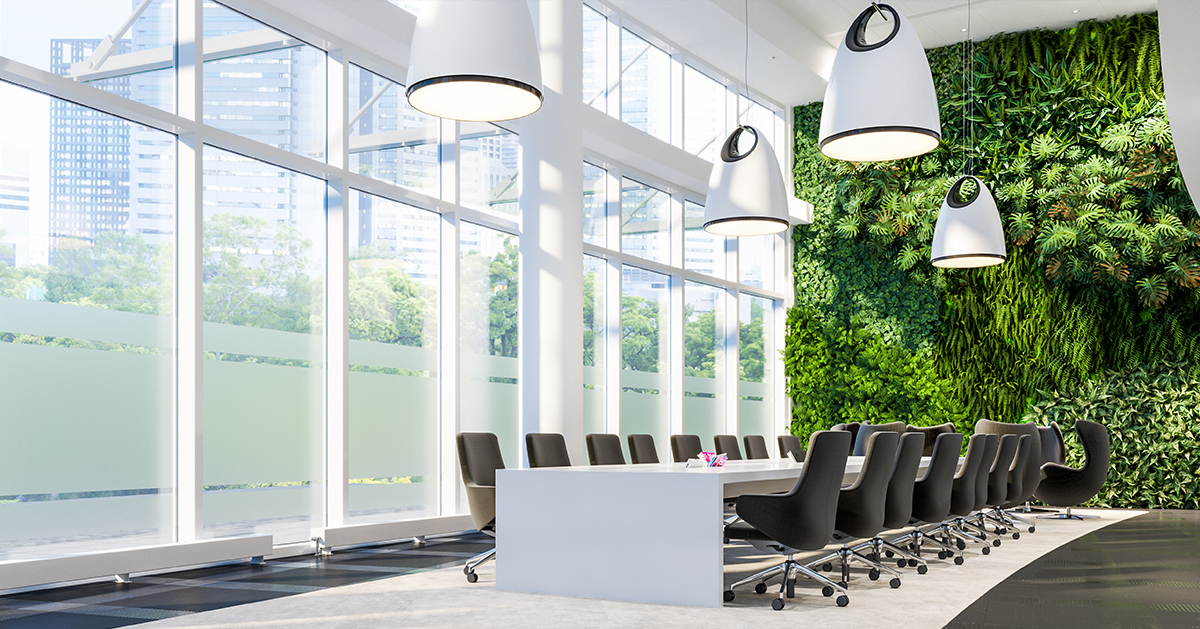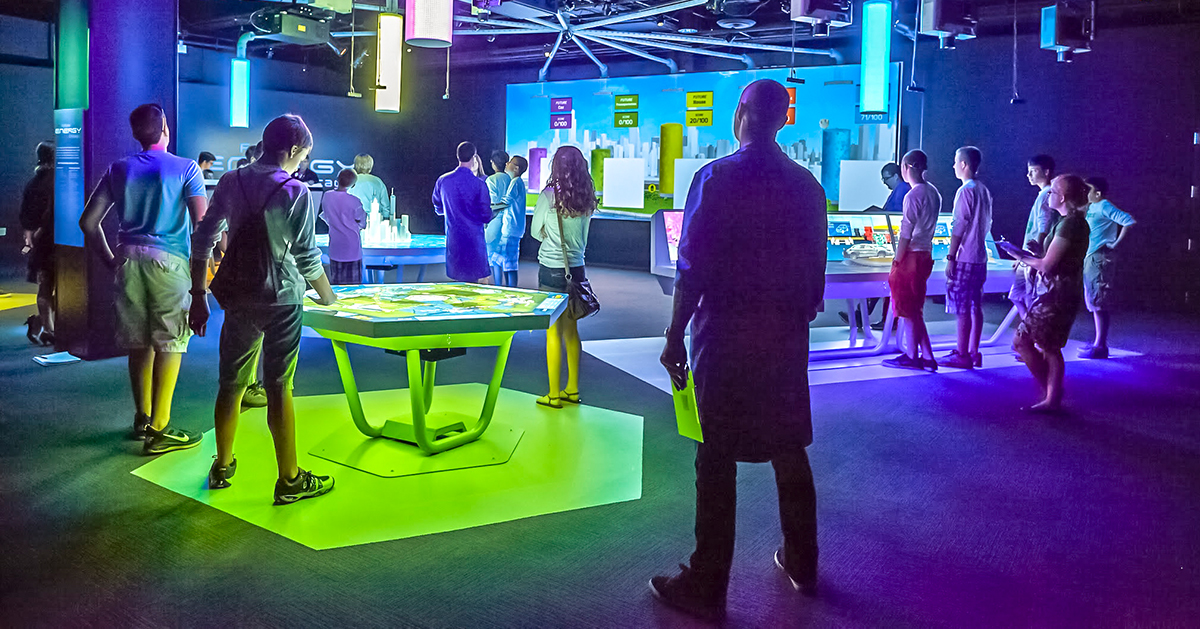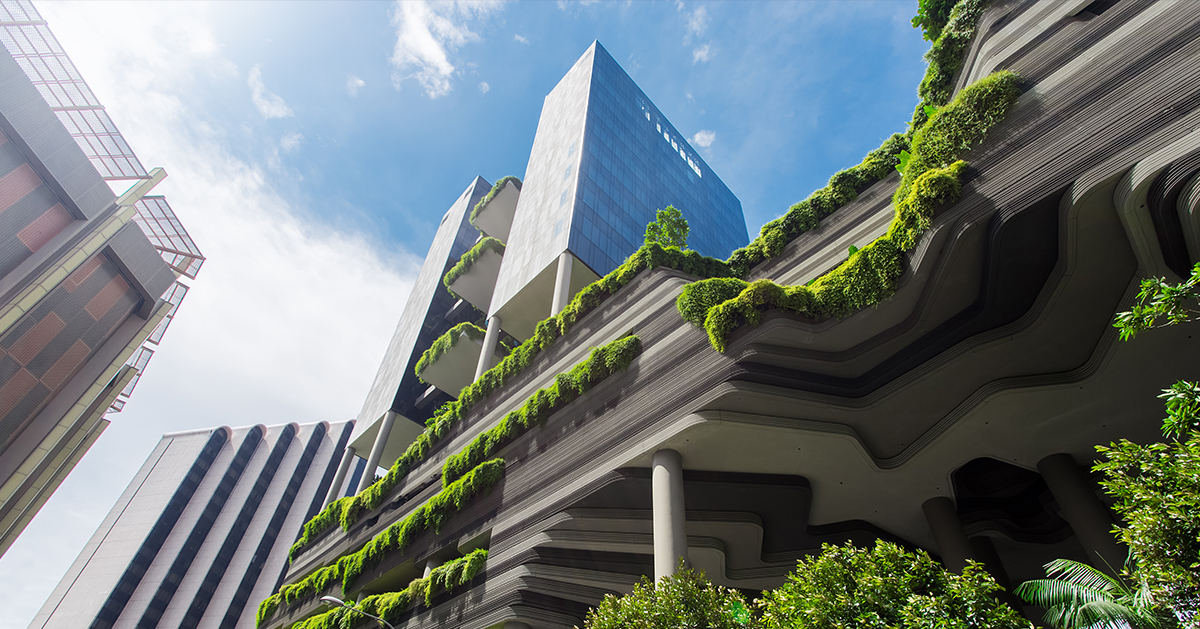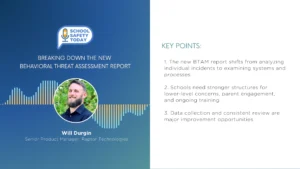What Sustainability Looks Like in the AV Industry
Modern society is becoming more concerned with sustainability and the protection of our shared environment seemingly every day – with the wealth of information at our fingertips about the potential impact of everyday human decisions, that impact is being measured and considered more often than ever before.
Ignoring this trend, particularly when creating stunning spaces designed for the public’s enjoyment and the creation of lasting and memorable experiences, is a quick way to fall behind.
So, how can you ensure that the process of creating and outfitting your latest project, especially in the case of its AV solutions, promotes sustainability and forward thinking?
It’s simple – by partnering with an AV integrator that shares that motivation and commitment to sustainable design.

The current relationship between AV and sustainability
There’s no getting around demands for energy. In today’s modern workplaces, museums, installations, and more, modern technological solutions require a tremendous amount of power.
The overall demand for AV solutions is also growing. To satisfy the demands of today’s technology-native customers, builders, owners and integrators are leveraging more digital signage, presentation solutions, interactive displays, cutting-edge audio, and more than ever before.
Still, this increased demand for solutions has certainly put a strain on sustainability visions.
However, that doesn’t mean that AV integrators can’t help the technological solutions in these spaces meet those goals.
To promote and recognize sustainable efforts, the U.S. Green Building Certification Institute offers Leadership in Energy and Environment Design, or LEED, certification, which the Institute boasts as the “most widely used green building rating system in the world.”
Though the major factors that go into earning LEED certification deal more with footprint, occupancy, energy and water usage, and other datapoints that don’t directly correlate to AV solutions, integrators can help clients achieve their goals in numerous ways.
How integrators are helping lead the charge in sustainability
When you think of sustainability, the usage and waste of energy is likely the first thing that comes to mind.
Fortunately, modern solutions exist that can help curb that waste without sacrificing the impactful nature of today’s AV solutions.
By joining a project early in its lifespan, integrators can ensure that decisions are being made regarding sustainability from the get-go. Increased automation has provided integrators with one of the industry’s easiest paths to sustainable design – by leveraging appliances and solutions that are able to be automated to turn off when not in use, spaces can cut down on wasted energy greatly.
Choosing premium solutions with improved energy consumption is also tremendously beneficial. If appliances are more energy efficient by design, total cost of ownership decreases, and disposal rates drop in the face of increased durability.
Automation has also opened the door for centralized control of AV solutions. If technology spread across a space can be controlled from a single interface, energy output can be controlled at a higher level than in years past.
Monitoring of devices over time can also open doors that lead to further sustainable efforts. With thorough data collection, facility managers and integrators that provide remote monitoring and repair can evaluate the efficiency of solutions over time, tweaking them to constantly improve upon the original plan of action.
Finally, the human aspect of the space can be taken into account, particularly in the case of corporate settings. While museums and other publicly accessible spaces can’t necessarily operate remotely, no such limitation exists in corporate environments. When possible, integrators can help develop solutions for remote conferencing and work that deliver environmental benefits in the form of less travel and emissions per employee, less on-site energy usage, and more.

Choosing the right sustainability partner
When choosing an AV integrator, it’s important to partner with a company that is just as committed to being “green” as you are.
Through effective partnerships, that commitment to sustainability can blossom in nearly endless ways. From promoting more effective monitoring of potentially harmful offshore oil and gas assets to installations that promote energy education and more, integrators that have truly decided to aid their clients in sustainable efforts will go beyond simply checking the “selected an energy efficient device” box.
Electrosonic, said Director, Technical Innovation Yiannis Cabolis, has supported architects and general contractors in achieving LEED certification and aiming for sustainability.
This collaboration has been the case, Cabolis said, on many of Electrosonic’s projects, including work done for the Kennedy Space Center, Nature Research Center in Raleigh, North Carolina and National Museum of African American History and Culture in Washington, DC, among others.
“In all these cases, we worked to deliver designs within the consumption of power as wattage per square foot to meet the LEED certification standard and provide information around the individual design intent, functionality and criteria so we could offer an edge in terms of design innovation,” Cabolis said. “An example of such could be specifying manufacturers that maintain a small carbon footprint or utilize recycled materials in their products, including packaging, etc.”
In addition, Cabolis said, Electrosonic seeks “to work with manufacturers that demonstrate sustainability initiatives through their production and delivery cycles, suggest products … that are made from recycled materials on the hardware side of AVC, and even suggest the use of acoustical treatment panels and insulation made out of recyclable materials, sometimes (using) clothing, such as jeans, for insulation.”
Though the manufacturer of LED tiles that used sun and ambient light for illumination has since ceased production, Electrosonic’s use of the technology back in 2008 at the New England Patriots Hall of Fame highlights the company’s commitment to staying on the cutting edge of sustainable design and implementation.
“(It) was a direct-view, full-color LED tile that used sun and/or ambient light to provide illumination,” Cabolis said. “The multiple 30-foot displays were specified originally as a solution to compete with the direct sunlight back then. However, it also offered a sensible way to harness renewable energy.”
Ready to see how Electrosonic can be your partner in your commitment to sustainable design and implementation of AV solutions? Contact us today.









